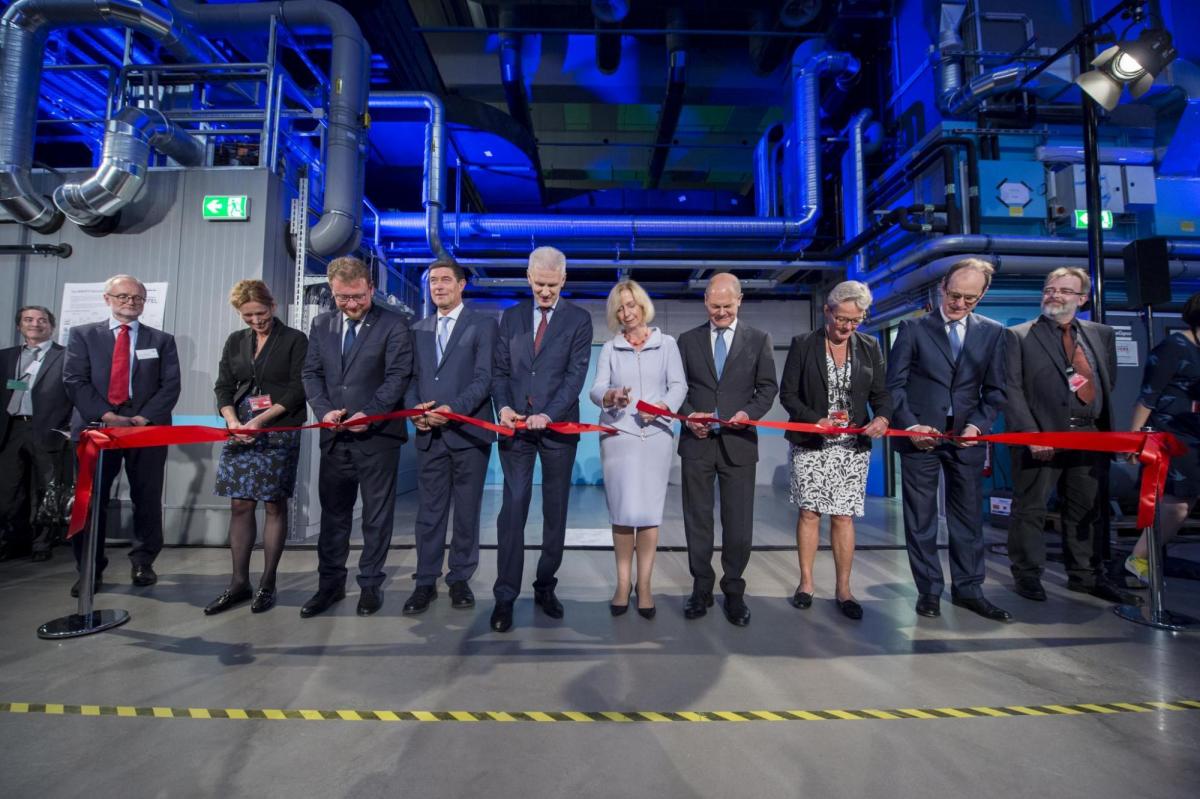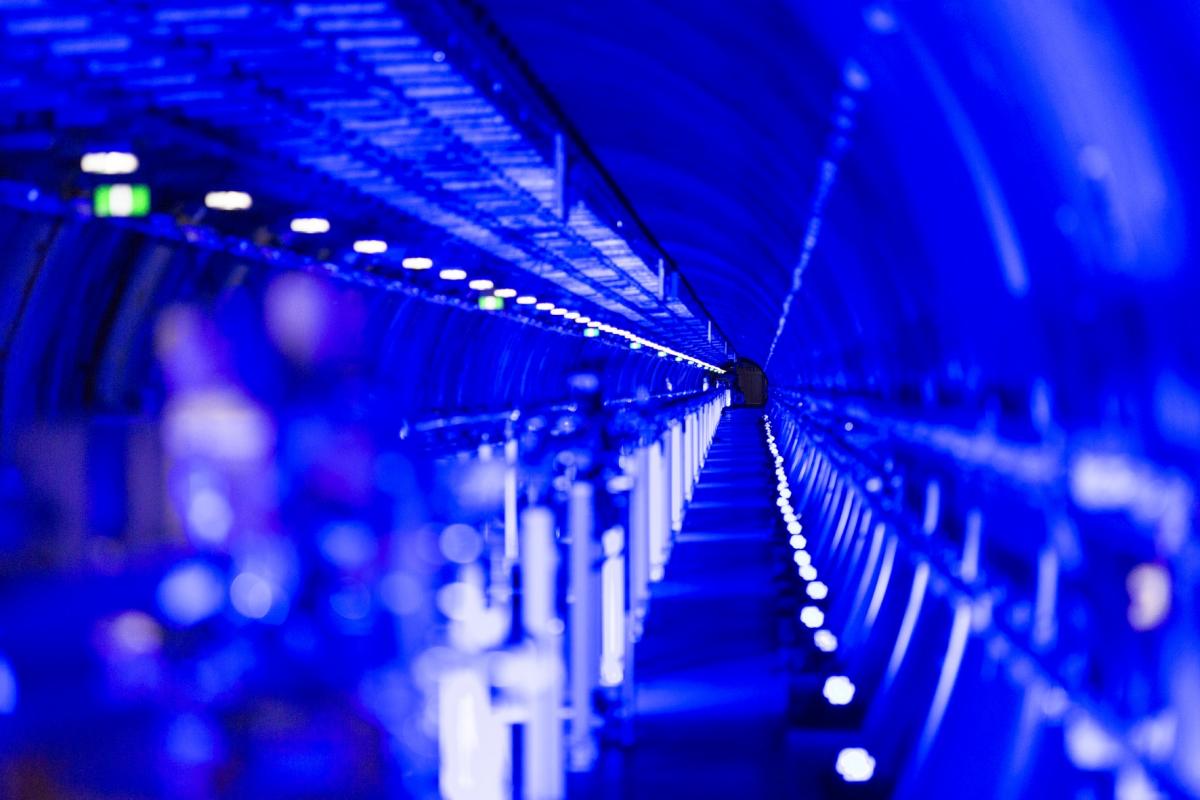The world’s largest X-ray laser, the European XFEL, located in a €1.22 billion research facility in the Metropolitan Region of Hamburg, was opened on Friday 1 September and is now in operation.

The XFEL facility was launched by research ministers and other prominent guests from across Europe, joined by the European XFEL managing directors. (Credit: European XFEL)
The XFEL – a type of X-ray free electron laser based on particle accelerator technology – will generate up to 27,000 X-ray pulses per second (200 times more than other X-ray sources), and a luminance a billion times brighter than other sources. Scientists will use these X-ray flashes to perceive atomic details and extremely fast processes that occur on the nanoscale. The three-dimensional structure of biomolecules and other biological particles can be mapped, for example, and done so faster and with more detail than ever previously possible.
Furthermore, single snapshots of particles obtained using the laser can be sewn together to create ‘molecular movies’ to study the progress of biochemical and chemical reactions – the basis for the development of new medicines and therapies or environmentally friendlier production methods and processes for extracting energy from sunlight. Other applications include the development of new materials and substances, for example in the optimisation of storage media for computers, or the investigation of extreme matter conditions such as those found within exoplanets.
‘The establishment of the European XFEL has created a unique cutting-edge research facility, which promises groundbreaking insights into the nanocosmos,’ commented Professor Dr Johanna Wanka, German minister for education and research. ‘The foundations for tomorrow’s innovations are laid by today’s basic research.’

The new XFEL facility costed €1.22 billion and features a 3.4-kilometre tunnel system. (Credit: European XFEL)
Scientists from across the world can use the facility for their research by applying for ‘beamtime’ via a selection process. The assigned time will be generally one or two weeks per group and experiment, and is awarded according to the scientific excellence of the submitted proposals.
The XFEL is a non-profit facility that employs approximately 300 people, cost €1.22 billion to construct, and features a 3.4km tunnel system that extends to the German state Schleswig-Holstein. It is therefore among Europe's biggest and most ambitious research projects.
The facility was launched by research ministers and other prominent guests from across Europe, joined by the European XFEL managing directors, who are set to start the research operation of the facility with the first two experiments in mid-September.
Eleven countries are currently involved in XFEL: Denmark, France, Germany, Hungary, Italy, Poland, Russia, Slovakia, Spain, Sweden and Switzerland. The UK is in the process of joining the facility, having planned to invest £30 million into XFEL at the end of 2014.
‘The European XFEL is a joint scientific project in the spirit of the Enlightenment and of international cooperation, and a promising example of European integration in action and of the success of European research funding,’ commented Hamburg’s first mayor Olaf Scholz.

